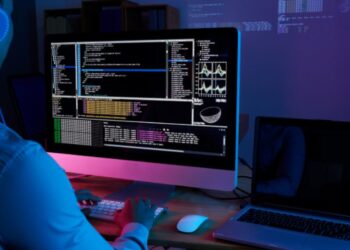The world is changing rapidly. Customers expect decisions in minutes, not days. Regulators demand transparency, and competitors are not asleep. If a credit institution works on the old «engine», it loses on all fronts.
Banks and credit unions are increasingly reviewing their processes, especially regarding credit platforms. Unsurprisingly, the key area in 2025 has become the modernization of software for loan management — systems that manage a loan’s life cycle.
One of the brightest representatives of the new wave is TIMVERO. It offers an innovative loan management system based on artificial intelligence. The timveroOS product does not just automate, it thinks together with the lender.
Financial institutions use a smart Loan Origination System (LOS) to shorten the client’s path from application to approval from hours to minutes. At the same time, the program maintains high accuracy, transparency, and compliance with regulatory requirements.
Old LOS No Longer Works
LOS were a rarity ten years ago, but today, they are a necessity. Most of the solutions used are obsolete. They are cumbersome, inflexible, do not work with external APIs, and require manual operations, which slow down business.
Clients are accustomed to Amazon’s and Uber’s experiences. They want the here and now. When a bank responds to them in 48 hours, it has already lost. If an application is «hanging» due to a system failure, this is a reputational failure.
Old-type platforms cannot adapt to new challenges: they do not work with big data, analyze user behavior, or provide forecasts. In 2025, such a LOS will be ballast, not an assistant. Therefore, switching to a modern solution is no longer a choice but an obligation. This is the only way organizations can ensure the speed, accuracy, and personalization the market expects.
What New LOS Platforms Provide
Modern LOSs are not just electronic questionnaires; they are a robust ecosystem that connects the front and back office, analytics, scoring, and external databases. Solutions of 2025 are powered by artificial intelligence, can learn, offer recommendations, and quickly scale to the needs of a specific business.
They help not only to process applications faster. They see more, understand the context, and can adapt to changes on the fly. This is especially important in an unstable economy, where accuracy and speed are key aspects. Moreover, modern LOS supports multichannel mobile applications, web portals, and built-in chatbots — all of which increase the convenience and accessibility of the service.
Benefits That Banks Receive
Transitioning to a new LOS is a rather serious step, but the advantages outweigh the efforts. Among the main benefits that banks and credit unions receive after modernization, the following can be highlighted:
- acceleration of the credit cycle;
- minimizing human factor influence;
- simplification of regular reporting;
- integration with external sources;
- automation of complex calculations;
- increase in customer satisfaction;
- reduction in the cost of one loan.
Such changes affect everything at once, from operational efficiency to financial results. Banks reduce costs, increase the volume of processed applications, and adapt faster to changes in demand.
In addition, modern platforms support customization for different types of products: mortgages, car loans, and small businesses. This means that the system does not work according to a template but adapts to the specifics of the market and the client. As a result, lending becomes more accurate, faster, and more customer-oriented.
Conclusion
LOS modernization in 2025 is not a buzzword but a strategic necessity. Old systems slow down business, do not meet customer expectations, and hinder growth. New AI-based platforms, such as timveroOS, give businesses the necessary impetus: speed, adaptability, accuracy, and security.
Modern tools make lending smart. It ceases to be formal and is focused on each person. This is what allows banks to not only survive but also win in an era of change, where the winner is the one who decides faster, deeper, and more far-sightedly.















